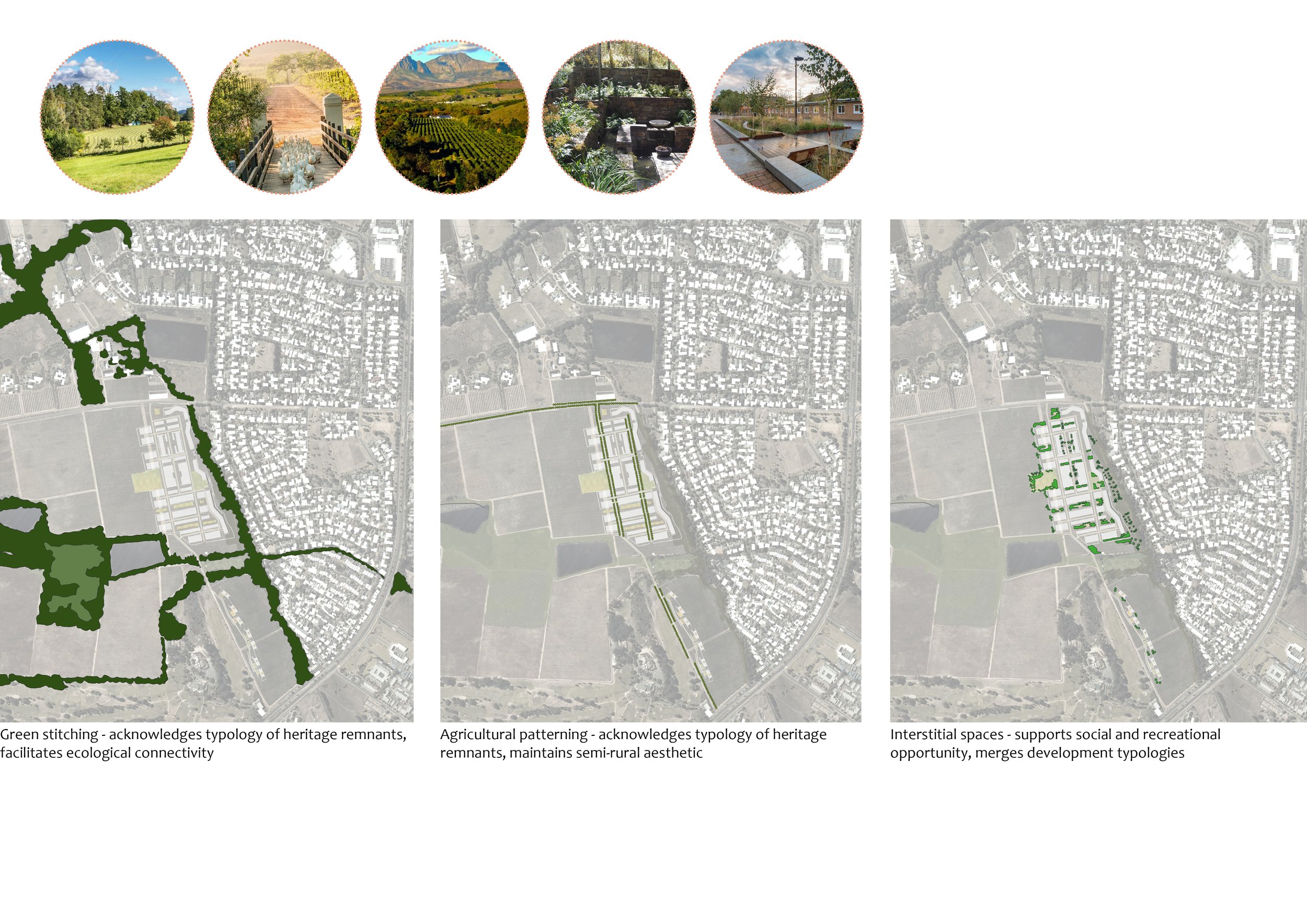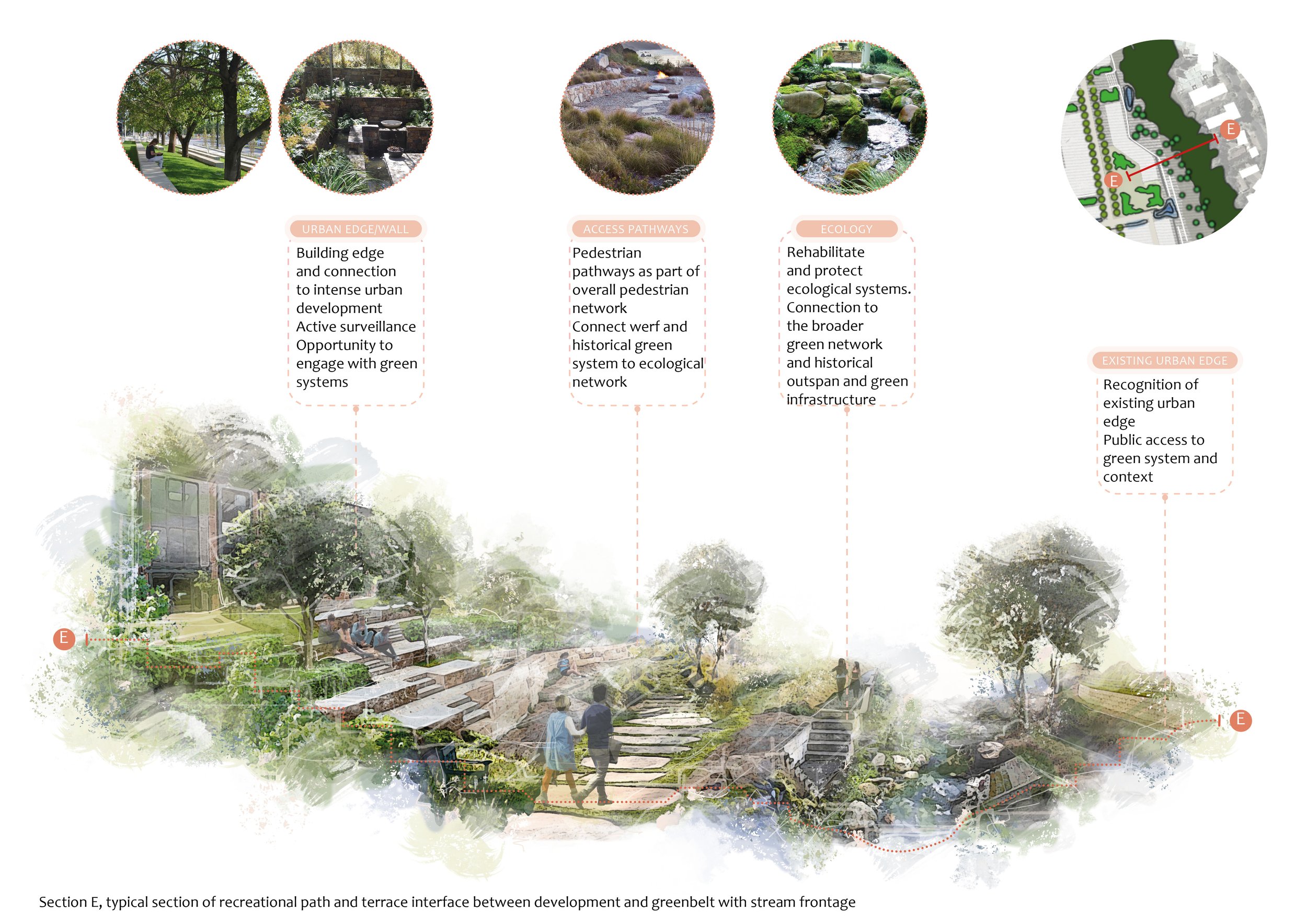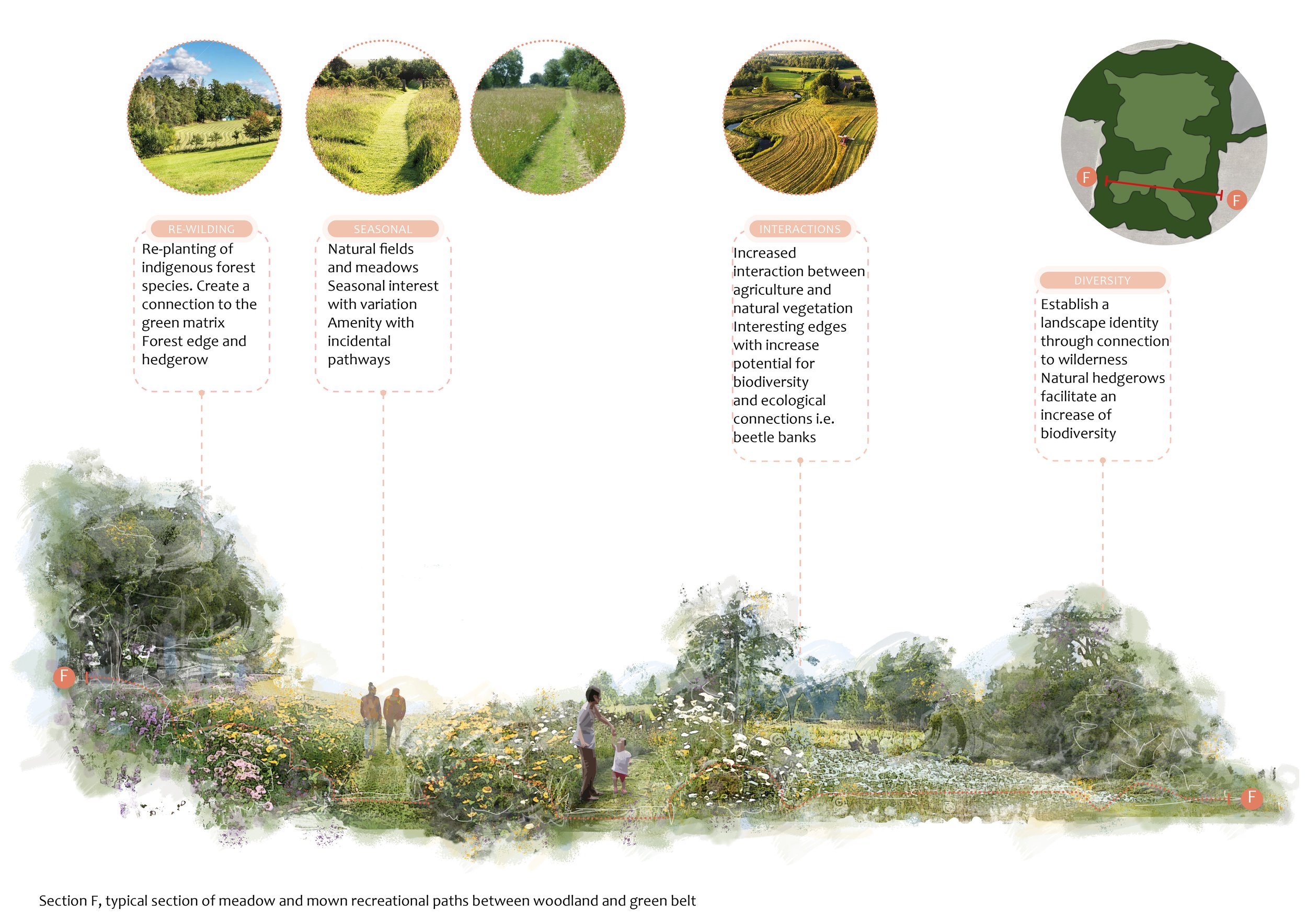Libertas High Level Framework
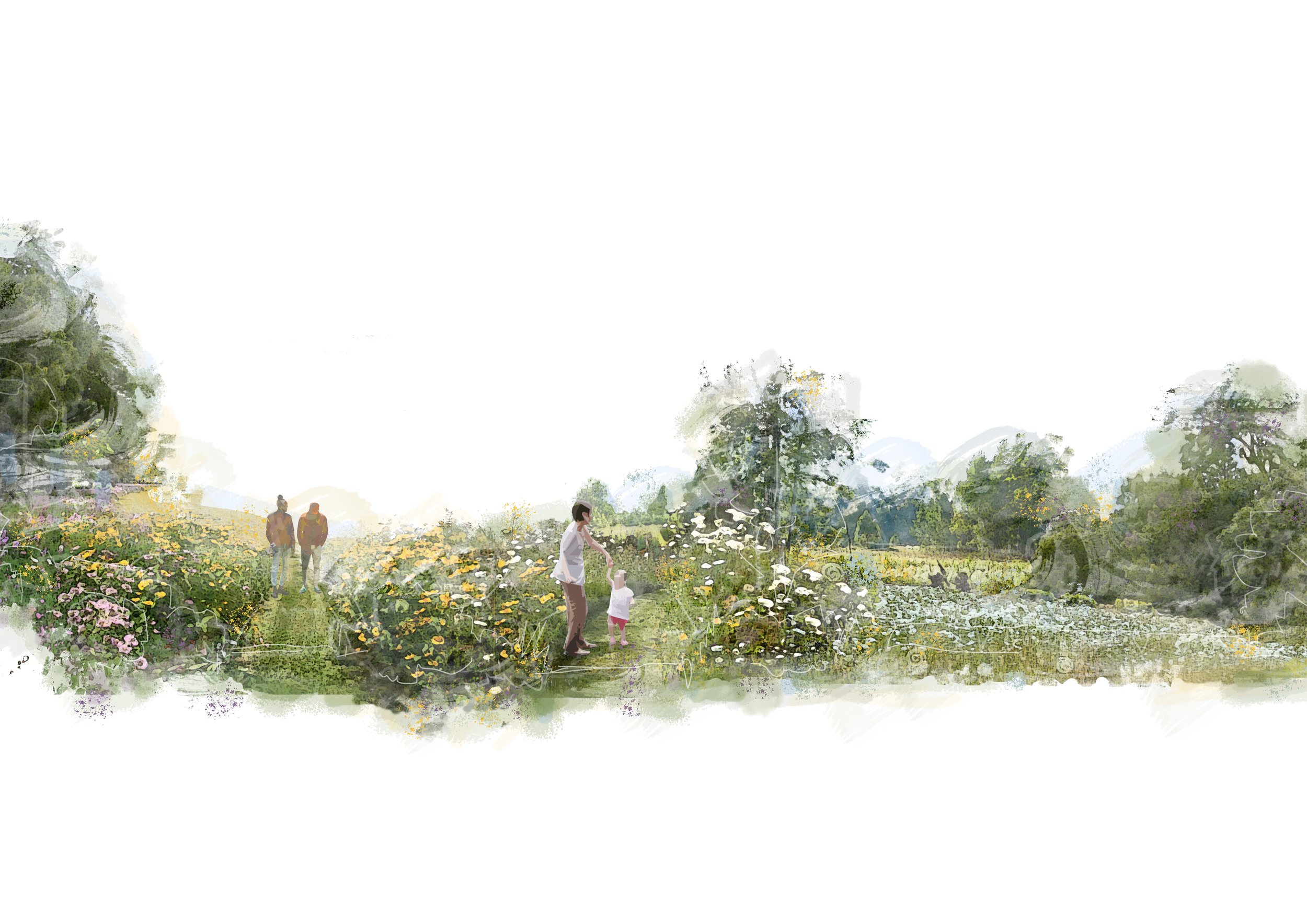


The proposed development lies in a valley delineated by the rolling hills of Papegaaiberg, composed of malmesbury shale, to the west and the sharp ascent of Stellenbosch Mountain’s table mountain sandstone, to the east. The surrounding lowlands are composed of rich alluvial soils supporting agriculture, primarily viticulture, and are dissected by a prominent water course to the north, the Eerste river and to the south the lesser Blouklip river.
As part of the concept development, a visual study and landscape character analysis of the site has been completed. The rural quality of the area and the particular layout of the werf were both qualities that were deemed significant attributes to the site. Further to this the historic tree planting on site (and the visual buffer this provides) is another quality which can be built on and developed further to add to the particular identity and sense of place.

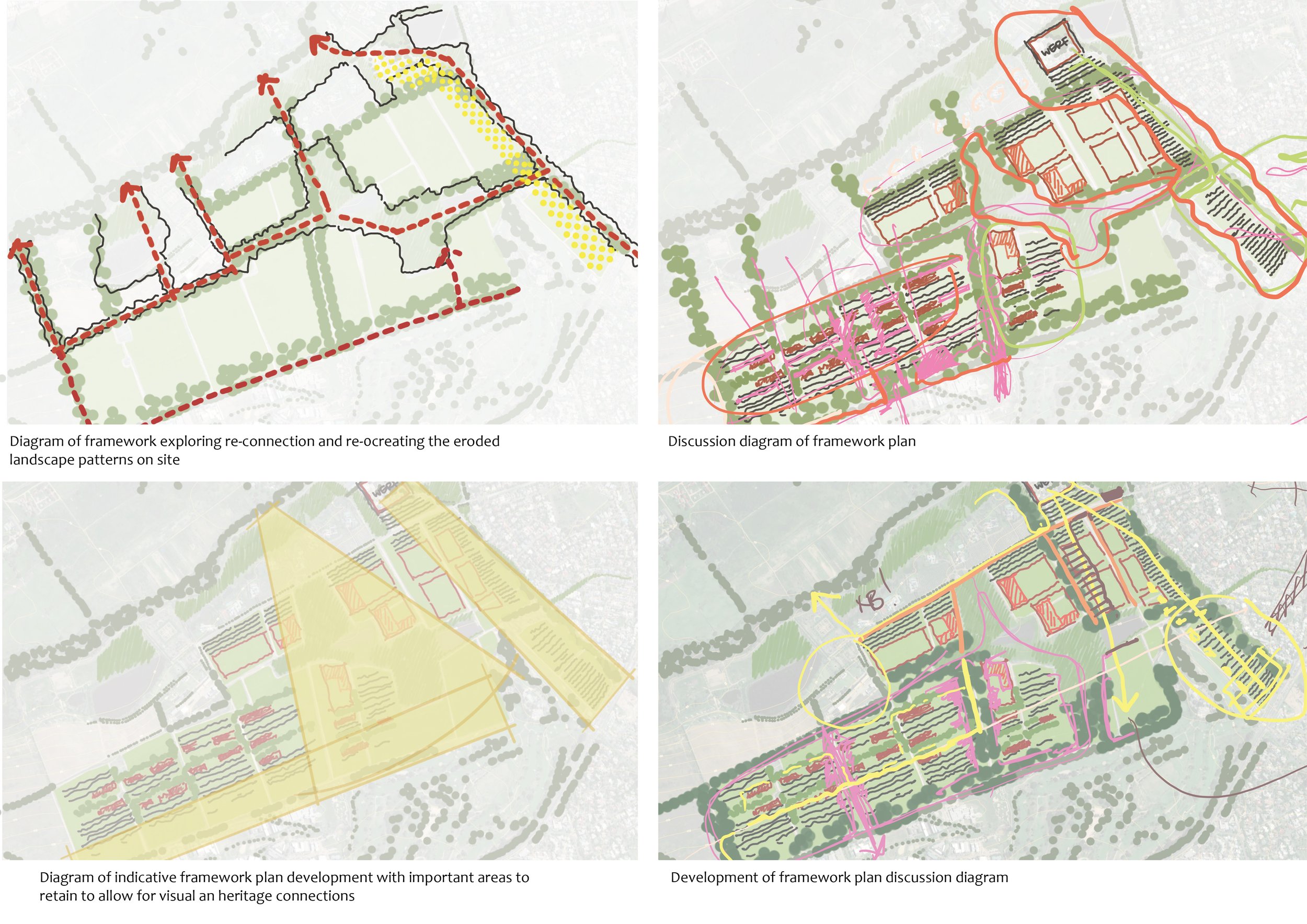
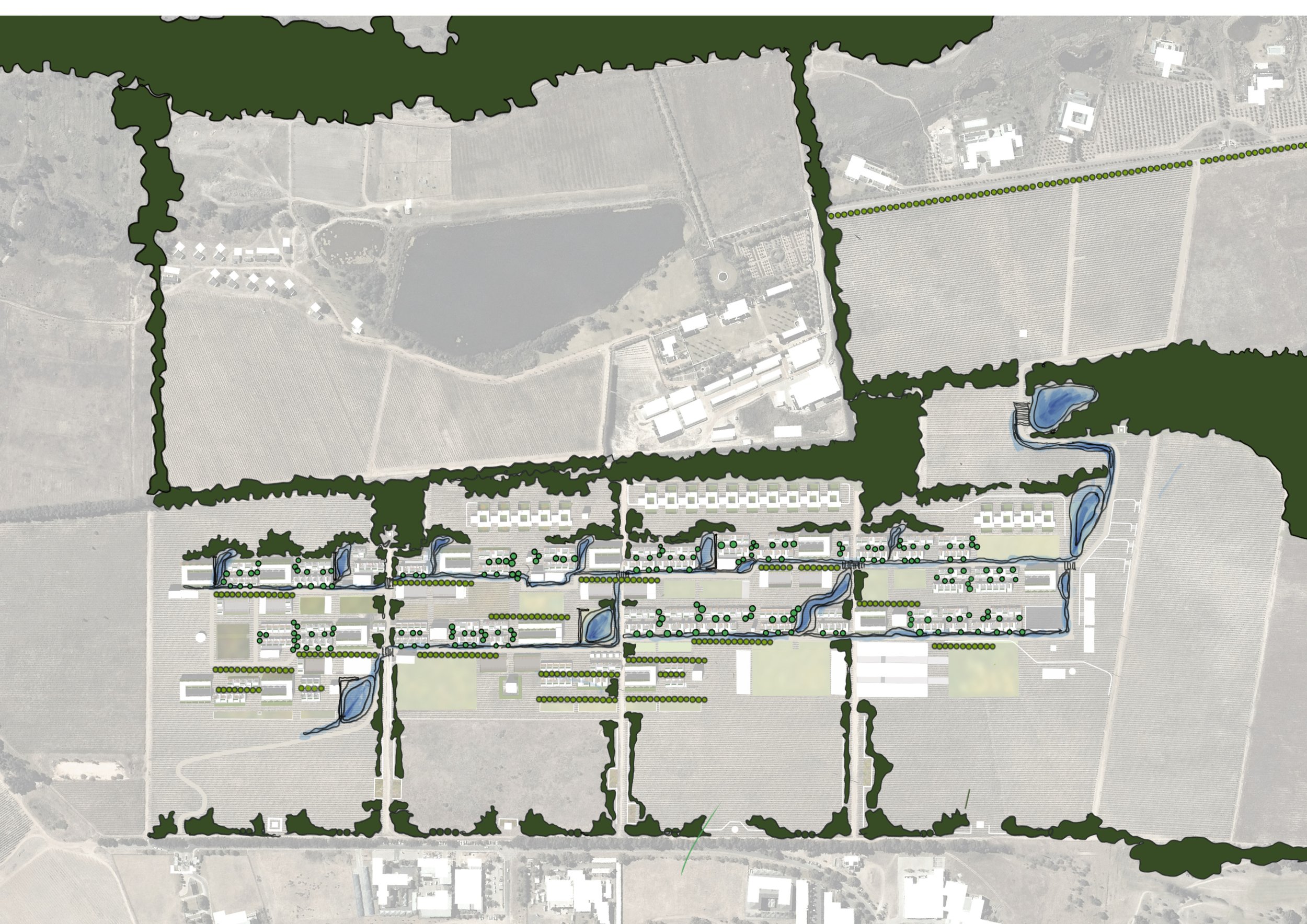
The landscape approach is a strategy of management of various spaces, transition spaces, connection and systems rather than over-design elements that have little to no contributing value to the overall precinct. To this end the following aspects will be explored: natural river course & ecological connections; man-made connections & stormwater management; pathways, edges & accessibility; meadows & hedgerows.


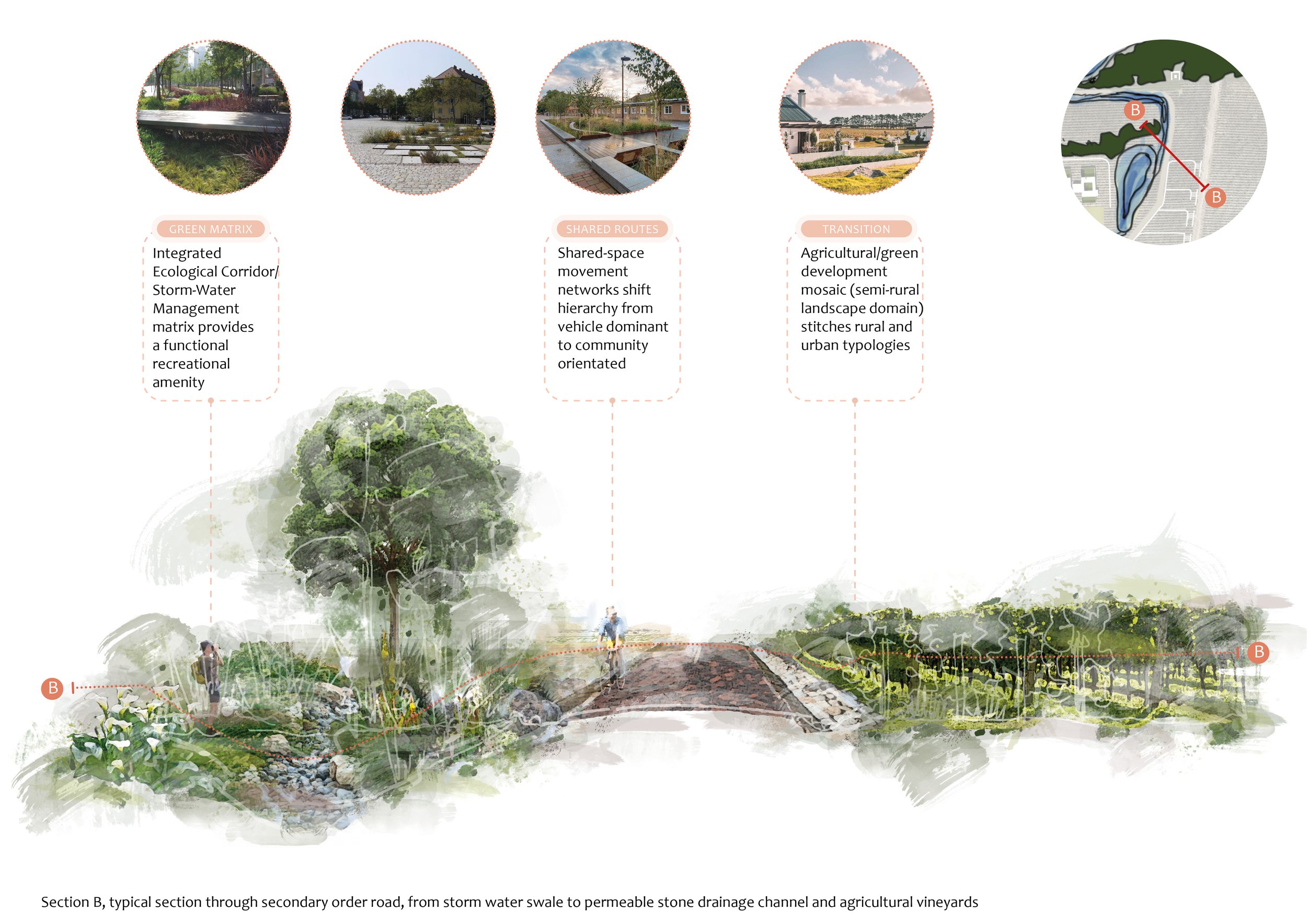
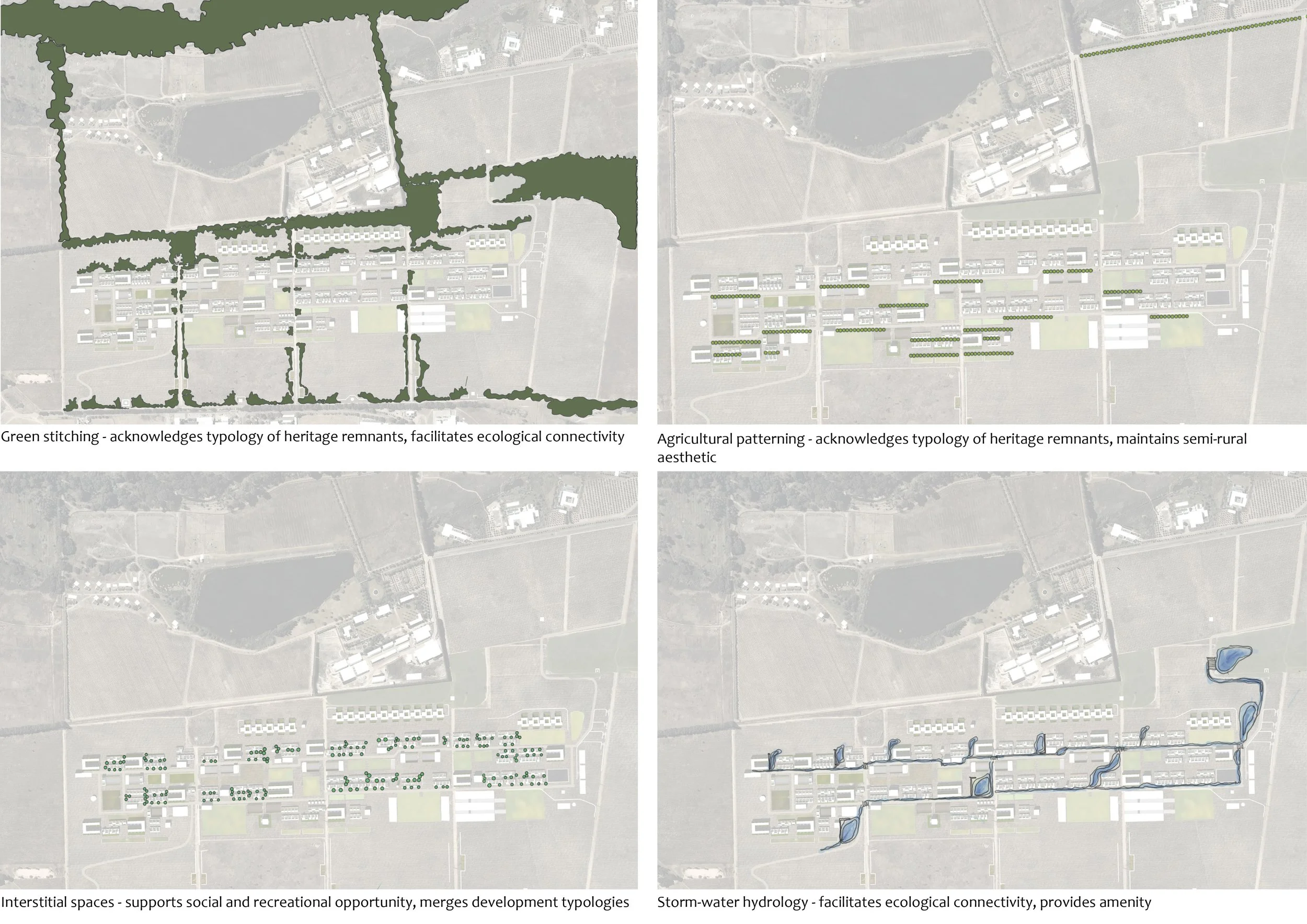
The higher intensity development on the eastern portion will provide a more dense configuration of dwellings units and therefore the internal green spaces and their connection to the broader landscape is of utmost importance. The following are considered: Visual and Physical Connections; Streets & storm-water management; pathways, edges & accessibility; ecology & people; edge conditions & buffer zones; senescence & the landscape; edible gardens & harvestable landscapes
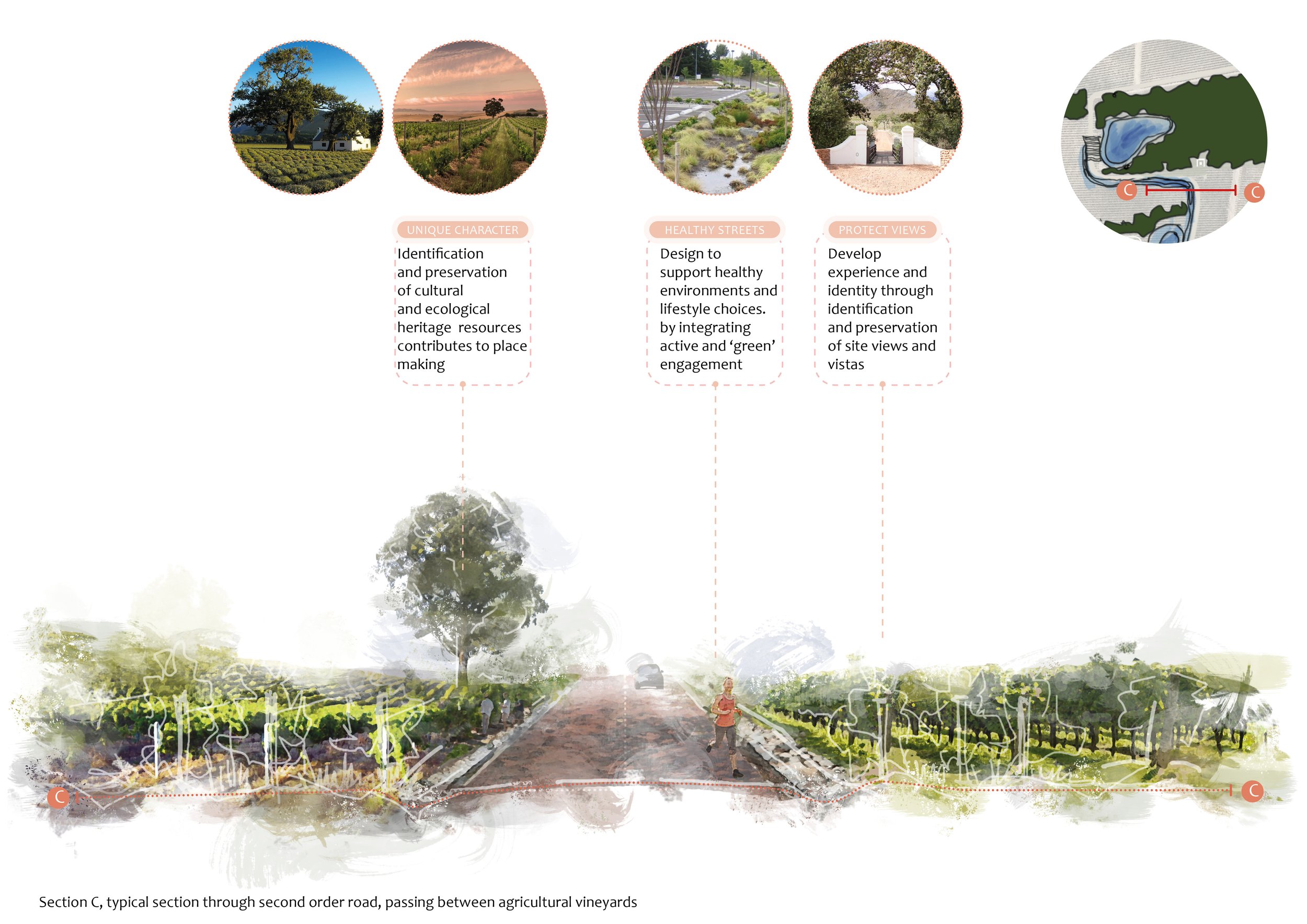
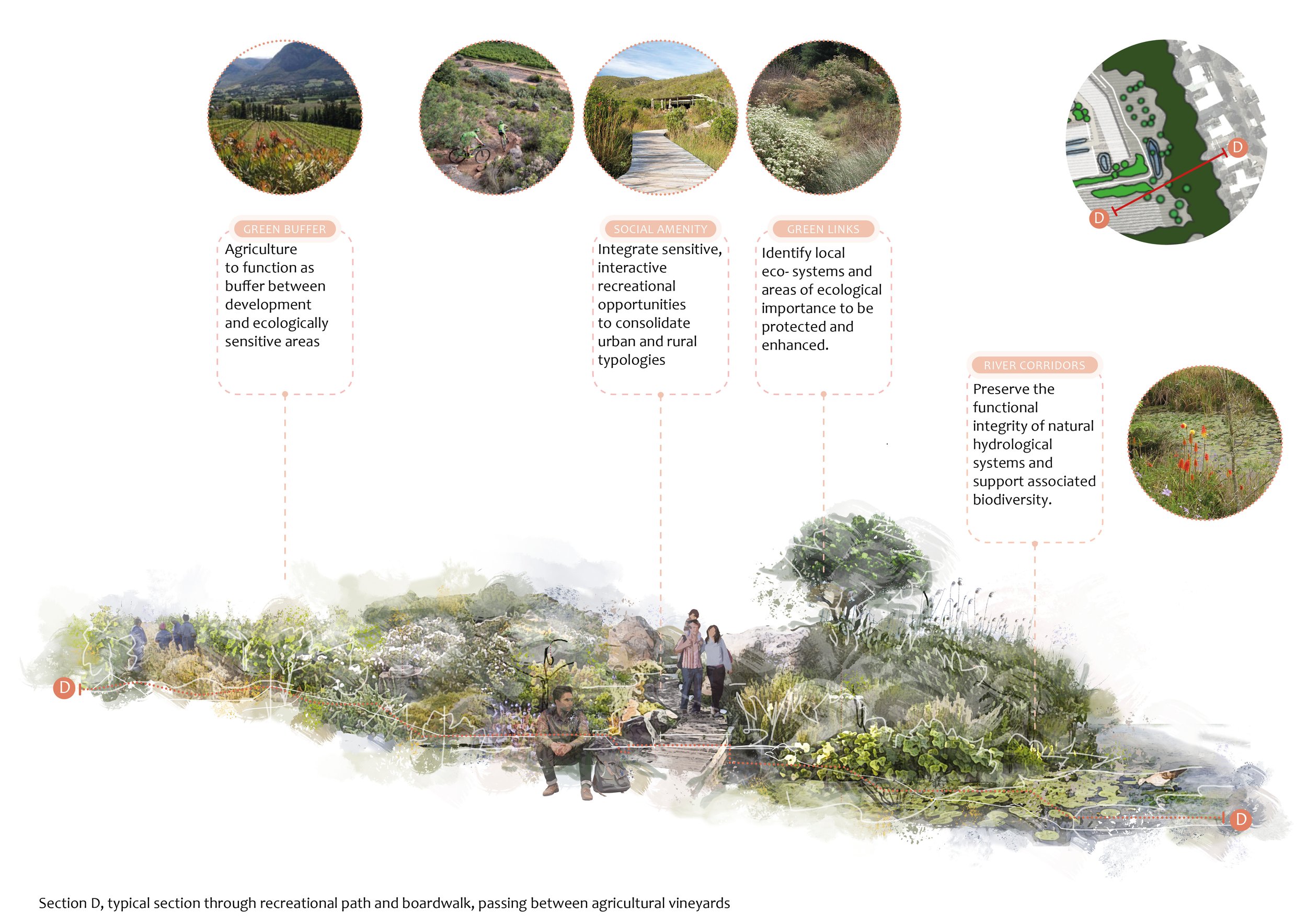
Ecology and People - In all instances where soft-landscaping is applied the recognition of the broader ecology is paramount. The influence of ecology on the daily life should be celebrated and the diversity of various ecosystems on the site must be enhanced and developed. It should be understood that the health of the micro system is dependant on the health of the macro system and visa-versa. Maintenance then becomes self evident and the strategy to retain and maintain verges and other green spaces are crucial for a sustainable and resilient landscape.
Where erven are adjacent to the river corridor, meadow or forest, the interface must be managed with long-term landscape strategies to retain the natural interactions of a healthy ecology. This may require certain erven to have a ecological servitude as an extension to the erf boundary.
